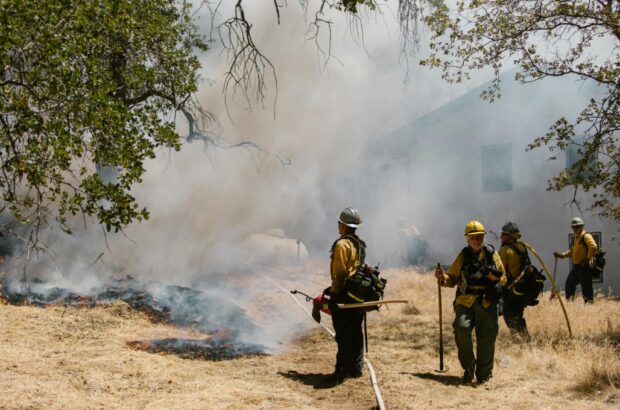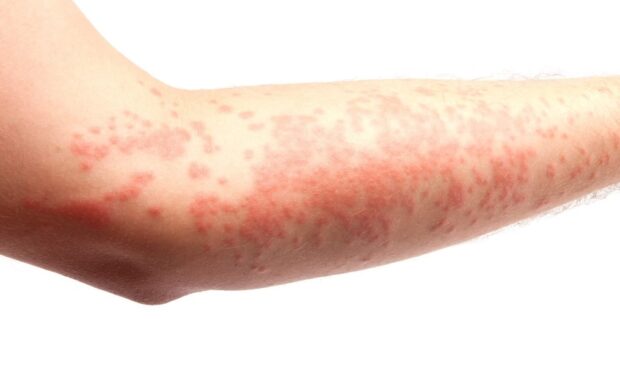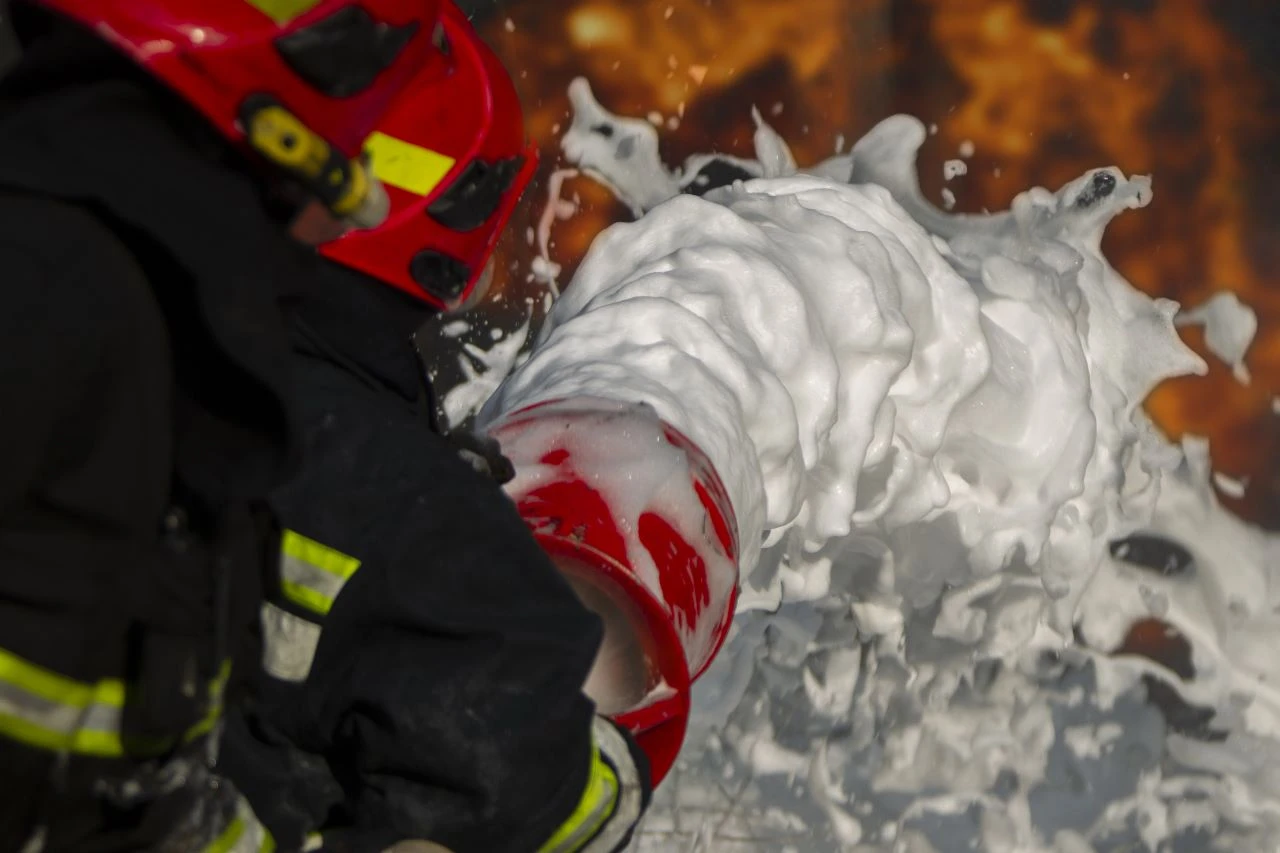Firefighters encounter dangerous environments daily, but extended exposure to Aqueous Film Forming Foam introduces a different set of long-term health concerns. Prolonged exposure may lead to respiratory issues, cancers, skin disorders, cardiovascular problems, and hormonal disruptions.
These health challenges highlight the need for improved protective measures and awareness within the firefighting community. In this article, we delve into the health risks firefighters face from continued AFFF exposure and the importance of mitigating these dangers.
Chronic Respiratory Issues
Exposure to AFFF foam can lead to harmful chemicals accumulating in the lungs, causing chronic respiratory conditions like asthma, bronchitis, or COPD. Prolonged exposure to these chemicals may result in irreversible lung damage.
NCBI research shows that firefighters exposed to AFFF foam and wildfire smoke experience an accelerated decline in lung function. This deterioration leads to decreased levels of FEV1 and FVC. Studies haven’t consistently linked firefighter exposure to COPD, but accelerated lung function decline and increased exacerbations emphasize the need for prevention.
Firefighters should regularly monitor their respiratory health, undergo routine screenings, and utilize appropriate PPE to limit inhalation of toxic fumes. Adhering to these safety measures is vital for preserving lung health and preventing long-term respiratory complications linked to AFFF foam exposure.
How can firefighters minimize their risk of respiratory problems related to AFFF?

Adequate respiratory protection, proper ventilation during AFFF foam use, and thorough gear decontamination are essential for reducing respiratory risks. Regular screenings to monitor lung function are essential for early detection of respiratory issues. Adopting safer alternatives to AFFF can also limit exposure to harmful chemicals.
Increased Risk of Cancer
Regular medical check-ups are crucial for early cancer detection, enabling prompt intervention and treatment. Research indicates that firefighters are particularly vulnerable to prostate cancer. This heightened risk underscores the need for stringent safety protocols and continuous health monitoring.
The term AFFF foam cancer refers to the severe risks associated with prolonged exposure to AFFF, which contains PFAS. These chemicals accumulate over time, increasing the cancer risk with ongoing contact. Firefighters should follow strict decontamination procedures, limit AFFF exposure, and undergo regular screenings to manage potential cancer risks.
The Arizona Board of Regents highlights research connecting firefighting to an elevated risk of prostate cancer. A recent study found that firefighters have a 1.21 times higher rate of prostate cancer compared to the general population. This increase is attributed to chemical exposures such as PFAS in firefighting foam.
According to TorHoerman Law, AFFF firefighting foam and its PFAS chemicals are linked to various cancers. The firm contends that AFFF manufacturers should have been aware of their products’ toxic nature and cancer risks. Current lawsuits often involve claims for prostate, testicular, kidney, and pancreatic cancers.
Hormonal and Endocrine Disorders
Firefighters exposed to AFFF foam over extended periods may experience disruptions to their hormonal and endocrine systems. The chemicals in the foam act as endocrine disruptors, interfering with hormone regulation and potentially leading to thyroid issues and reproductive complications.
These challenges may manifest as fatigue, weight changes, or fertility issues. Reducing foam exposure, undergoing regular screenings, and advocating for safer alternatives without PFAS chemicals can help minimize health risks.
Skin Conditions and Disorders

Extended exposure to AFFF foam can cause a range of skin problems, including irritation, dermatitis, and chemical burns. Over time, the buildup of PFAS chemicals can lead to more severe, chronic skin disorders. Firefighters should wear proper protective clothing and thoroughly cleanse their gear and skin after each exposure.
Regular skin monitoring is essential to detect and manage any persistent symptoms early. Prompt treatment is necessary to prevent long-term skin complications and ensure overall well-being. Adopting these preventive practices helps firefighters minimize the risk of chronic skin issues and promotes healthier skin over time.
Cardiovascular Health Concerns
ScienceDirect states exposure to PFAS and PAHs among firefighters has been linked to adverse cardiovascular health outcomes. The CELSPAC-FIRE expo study found that increased exposure correlated with higher total bilirubin levels and altered serum lipids, including cholesterol and LDL.
Specifically, PFAS and PAH exposure were associated with a 28.6% increase in bilirubin and a 29.5% rise in cholesterol. These findings underscore the need for regular monitoring of cardiovascular health in firefighters.
AFFF foam exposure increases the risk of cardiovascular problems, including high blood pressure, elevated cholesterol, and heart disease. Over time, these chemicals can contribute to serious cardiovascular complications.
To mitigate these risks, firefighters should prioritize regular heart health screenings, adopt healthy lifestyle choices, and minimize exposure to AFFF foam. Early detection of cardiovascular issues can improve health outcomes and reduce the impact of long-term PFAS exposure on heart health.
What symptoms or signs should firefighters watch for regarding heart health?
Firefighters should be alert to symptoms such as chest pain, shortness of breath, dizziness, and unexplained fatigue, which could indicate cardiovascular problems. Elevated blood pressure and cholesterol levels, along with irregular heart rhythms, may signal the need for further evaluation. Regular heart health screenings and maintaining a healthy diet and exercise routine can help firefighters address these risks.
Mental Health Challenges

Frontiers Media states firefighters face significant mental health challenges, with a recent study revealing an 8.6% prevalence of PTSD. About 14.4% of people exposed to traumatic events experience some form of global psychopathology. The study found a direct correlation between the number of adverse events experienced and increased PTSD symptoms. This highlights the critical need for targeted mental health interventions and support for firefighters dealing with cumulative trauma.
The stress of firefighting, coupled with worries about long-term health impacts from chemical exposure, can greatly affect mental health. Firefighters are particularly susceptible to anxiety, depression, and post-traumatic stress disorder (PTSD). Firefighters should proactively address their mental well-being by seeking professional counseling, participating in peer support networks, and practicing stress-relief techniques.
Fostering open conversations within the fire service can create a supportive environment that eases the psychological burden of their demanding job. Proactive mental health management is essential for maintaining overall wellness and effective job performance.
How can firefighters address and manage mental health challenges?
Managing mental health challenges involves seeking professional counseling, engaging in peer support, and practicing stress-relief techniques like mindfulness and exercise. Mental health screenings can help detect early signs of anxiety, depression, or PTSD. Encouraging open dialogue about mental well-being within firefighting teams and offering access to mental health resources can strengthen resilience.
Safeguarding Firefighters’ Health Amid AFFF Exposure
Firefighters exposed to AFFF foam face various chronic health issues, including respiratory, cardiovascular, cancer, skin, hormonal, and mental health risks. PFAS chemicals in AFFF are linked to long-term health issues, highlighting the need for regular screenings, protective equipment, and safer foam alternatives.
Firefighters must prioritize their well-being to mitigate these risks while continuing to serve their communities.
 Jewel Beat
Jewel Beat

